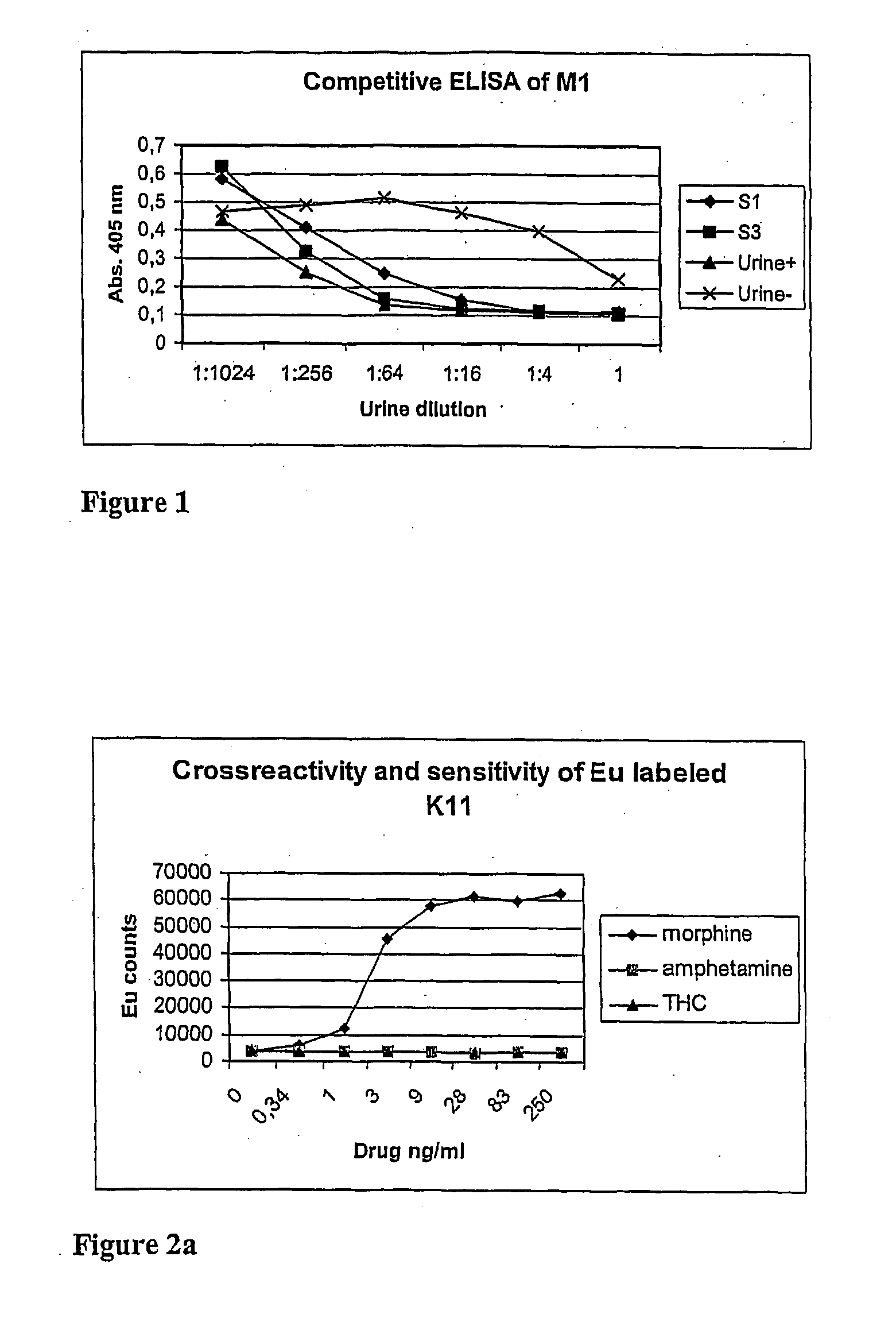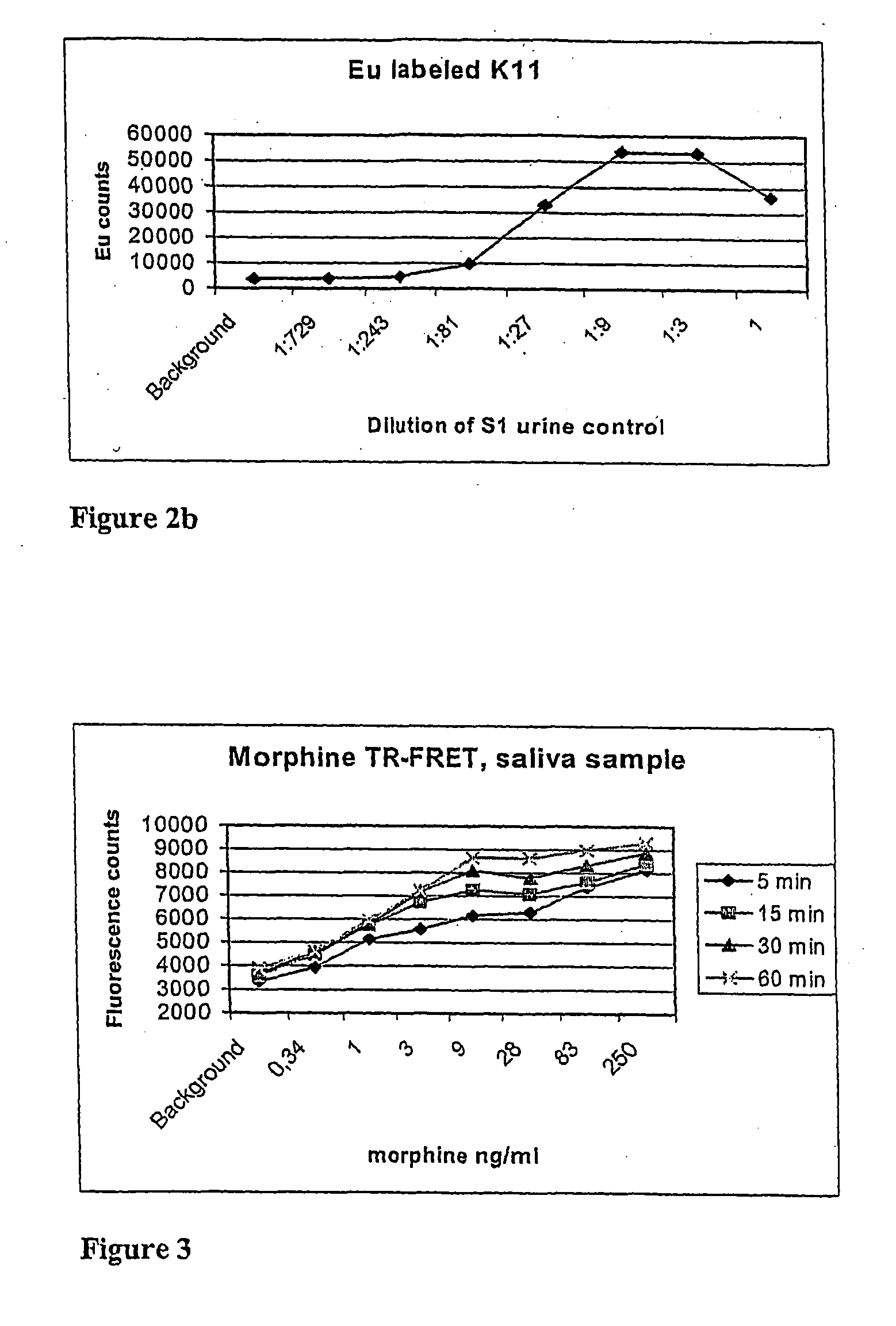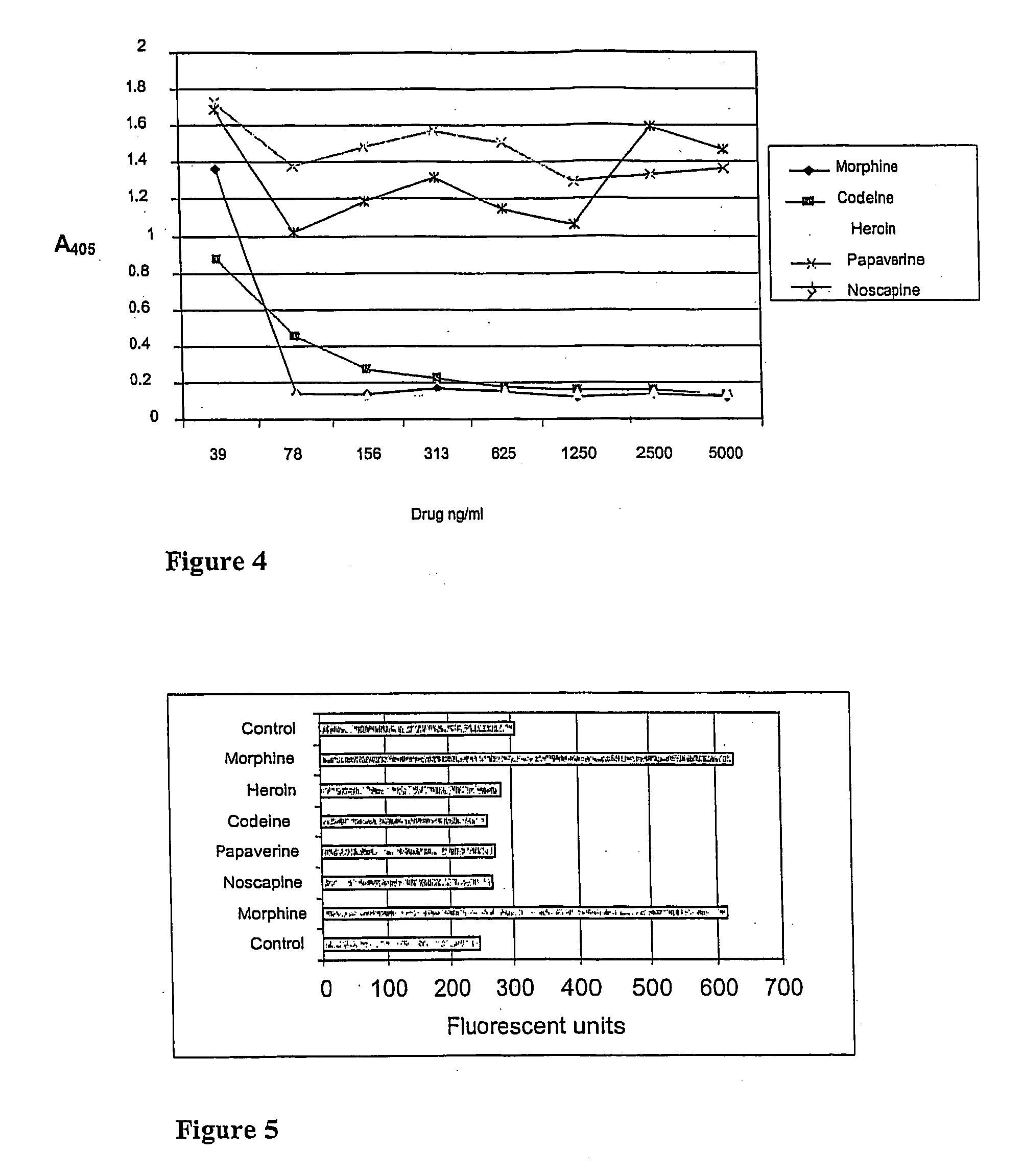Non-competitive immunoassay for small analytes
a small analyte, non-competitive technology, applied in the field of immunoassays, can solve the problems of difficult task to develop sterically hindered binding of alphatypes to primary antibodies, and difficult task of developing non-competitive immunoassays for small analytes, etc., to achieve rapid, reliable and simple immunoassays, cost-effective and feasible
- Summary
- Abstract
- Description
- Claims
- Application Information
AI Technical Summary
Benefits of technology
Problems solved by technology
Method used
Image
Examples
example 1
Development of an Anti-Morphine Antibody
[0039] Immunisation of Mice
[0040] Four six-week-old female Balb / c mice were immunised in three-week intervals with morphine conjugated BSA (Fitzgerald) in Freund's adjuvant. Serum samples were tested after second booster and the mouse showing the best response against the antigen in direct ELISA was selected to be the source of an antibody phage display library.
[0041] Construction of the Antibody Phage Display Library
[0042] All basic recombinant DNA methods were performed essentially as described (Sambrook et al. 1990). The mouse with the highest antibody response to morphine-BSA conjugate was sacrificed and the total RNA was isolated from the spleen cells using the RNagentse Total RNA Isolation System (Promega Co., WI, USA). The mRNA pool of the total RNA was isolated with the Oligotex mRNA Kit (QIAGEN Inc., Germany). The cDNA was synthesised from the mRNA with oligo-dT priming. Genes encoding antibody Fab fragments were amplified with P...
example 2
Cross-Reactivity of the M1 Fab-Fragment with Codeine, Heroin, Noscapine and Papaverine
[0070] Cross-reactivity of M1 anti-morphine Fab-fragment with codeine, heroin, noscapine and papaverine was tested in a competitive ELISA. Microtiter plate wells were coated o / n at +4° C. with 500 ng of morphine-BSA in 100 μl of Na-bicarbonate buffer, pH 9.8. The wells were washed three times with PBS and blocked with 0.5% BSA / PBS for 1 h at RT and washed again three times with PBS. Two parallel 100 μl samples containing morphine, codeine, heroin, noscapine or papaverine (39, 78, 156, 313, 625, 1250, 2500 or 5000 ng / ml) in PBS with 5 ng of purified M1 Fab were added into the wells and incubated for 30 min at RT on a shaker and washed three times with PBS. 1:2000 diluted alkaline phosphatase conjugated anti-Fab antibody (Sigma, A-1293) was added to the wells in 100 μl of 0.5% BSA / PBS and incubated for 30 min at RT on a shaker. Wells were washed three times with PBS, 100 μl of alkaline phosphatase ...
PUM
| Property | Measurement | Unit |
|---|---|---|
| Resonance energy | aaaaa | aaaaa |
Abstract
Description
Claims
Application Information
 Login to View More
Login to View More - R&D
- Intellectual Property
- Life Sciences
- Materials
- Tech Scout
- Unparalleled Data Quality
- Higher Quality Content
- 60% Fewer Hallucinations
Browse by: Latest US Patents, China's latest patents, Technical Efficacy Thesaurus, Application Domain, Technology Topic, Popular Technical Reports.
© 2025 PatSnap. All rights reserved.Legal|Privacy policy|Modern Slavery Act Transparency Statement|Sitemap|About US| Contact US: help@patsnap.com



